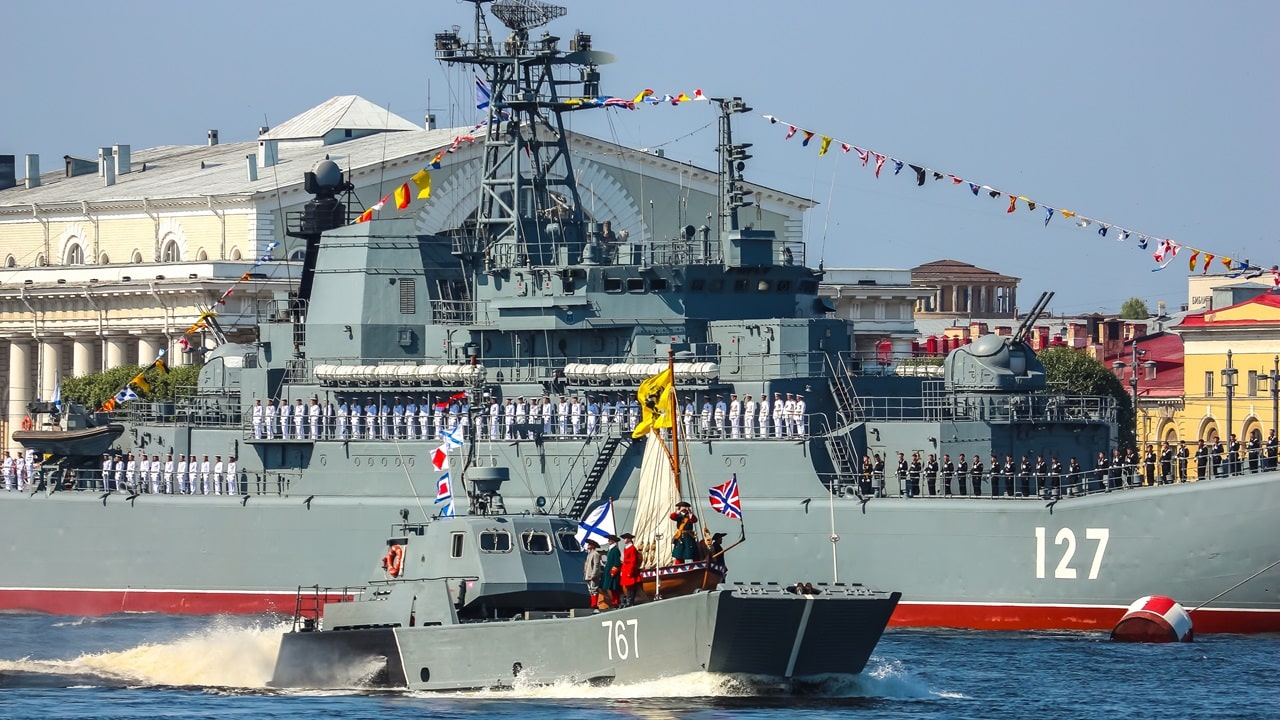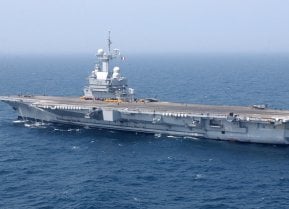The Russian Navy Could be the Biggest Loser of the Ukraine War
While Russia's once massive surface fleet has essentially rotted away, the Kremlin has made progress with hypersonic weapons that could turn its smaller frigates into warships as capable as the once mighty battleships that ruled the waves.
The Russian Navy Could Suffer Thanks to the Ukraine War: If the war in Ukraine were to end tomorrow, and if Russia were able to keep the ground it holds – including Crimea – it would likely be a failure for the Kremlin. It has seen more than 200,000 soldiers killed (perhaps as many as 300,000 according to figures from Kyiv), including the most general officers lost in combat since World War II, while somewhere around 2,500 to 3,000 tanks have been destroyed.
In addition, upwards of 150 aircraft have been destroyed, but notably, several warships have been sunk or significantly damaged. Moreover, the headquarters of the Russian Navy's Black Sea Fleet was struck by a missile, and the historic building was reported to be destroyed.
In fact, even if Russia were to hold the territory it gained, it could be argued that the Russian Navy is the war's biggest loser. Its prestige has been significantly damaged – losing the flagship to land-missile missiles will do that.
It is likely that the sinking of the Moskva will be taught to naval officers for a generation to come, and it has the distinction of being the largest warship lost in combat since the Second World War as well.
Lessons From History for the Russian Navy
This is not the first time that the Russian Navy has seen a setback. The Imperial Russian Navy suffered a humiliating defeat at the hands of the Japanese Imperial Navy during the Russo-Japanese War – losing its Second and Third Pacific Squadrons that made an 18,000-mile journey at the Battle of Tsushima in May 1905.
That battle marked the first time a modern battleship, the Oslyabya, was sunk by enemy gunfire. Five other battleships were also lost in the battle.
The Russian Navy fell from being the third-greatest naval power in the world to the sixth. Its focus was directed from the Far East to the Baltic. The Russian government sought to rebuild, but it was a slow-going effort. The total Russian naval expenditure from 1906 to 1913 was $519 million, in fifth place behind Britain, Germany, the United States, and France.
By the outbreak of the First World War, Russia was hardly a naval powerhouse. The same could be true following the war in Ukraine.
The Future as a State?
In 2009, then-Russian President Dmitry Medvedev made the bold statement "Without a proper navy, Russia does not have a future as a state."
It was meant to signal a naval modernization program, but today, Russia's Black Sea Flagship is on the bottom of the Black Sea, while its flagship carrier, Admiral Kuznetsov, Moscow's sole aircraft carrier has been undergoing a refit that has lasted years and is unlikely to return to service until late next year at the very earliest, and that is only if Russia can train a crew to operate the warship.
It has now been out of service so long that there simply aren't sailors in active service who have experience with carrier operations.
This spring it was also announced the nuclear-powered flagship of the Northern fleet, the Kirov-class nuclear-powered battlecruiser Peter the Great, will be scrapped because it is too expensive to modernize. In addition, her sister vessel, Admiral Nakhimov, is on track to begin sea trials perhaps next year – but that vessel has been out of service since 1999!
After arguably the longest refit in naval history, it was in January of this year that the loading of fuel and work on the power supply had finally begun. During the modernization efforts, more than 5,000 pieces of equipment were installed, while around 200 km (125 miles) of pipelines and 1,800 km (1,120 miles) of cables had been laid throughout the battlecruiser. Many naval experts have questioned her capabilities – as the warship is still going to be older than many of the sailors who serve on her.
A Smaller Russian Navy
While Russia's once massive surface fleet has essentially rotted away, the Kremlin has made progress with hypersonic weapons that could turn its smaller frigates into warships as capable as the once mighty battleships that ruled the waves.
The Admiral Gorshkov of the Fleet of the Soviet Union had been employed to test the weapons, and it reentered service at the beginning of this year. It could be a portent for the future Russian Navy – smaller and leaner, but still able to pack a punch.
Moreover, Russia will continue to maintain one of the largest submarine forces in the world – with 58 boats in total, including 11 nuclear-powered ballistic missile submarines (SSBNs), which remain integral to its strategic deterrent. It has also launched several new subs and has plans to build four additional ballistic missile boats, five cruise missile subs, and six diesel attack submarines.

Those vessels – along with a planned pair of amphibious assault ships, six frigates, and 24 corvettes – could help Moscow maintain a naval presence on the world stage.
Yet, it is hardly a proper naval force of the scale of the U.S. Navy – and likely never will be again. At best, it will be squadrons more than fleets.
Author Experience and Expertise
Peter Suciu is a Michigan-based writer. He has contributed to more than four dozen magazines, newspapers, and websites with over 3,200 published pieces over a twenty-year career in journalism. He regularly writes about military hardware, firearms history, cybersecurity, politics, and international affairs. Peter is also a Contributing Writer for Forbes and Clearance Jobs. You can follow him on Twitter: @PeterSuciu.
All images are VIA Shutterstock.


